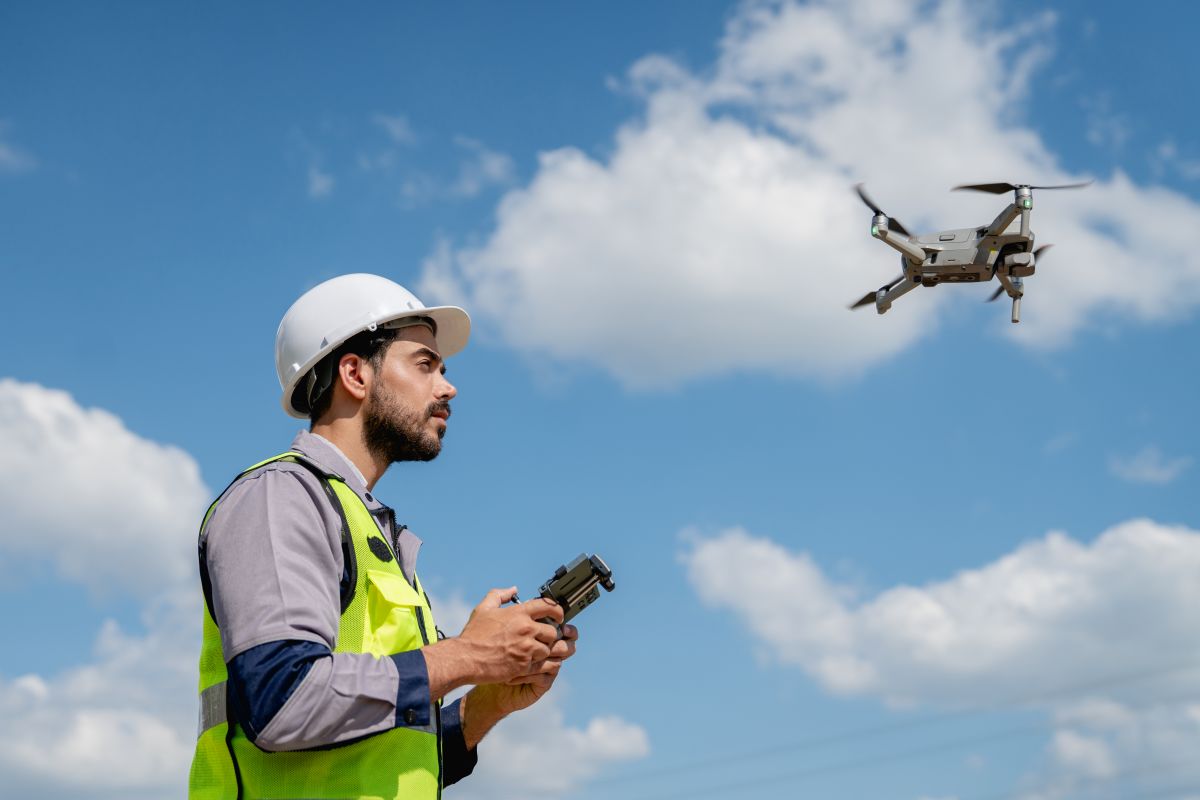
Video Production Agencies: Drone Video Mistakes
Have you ever watched a video about a topic that seemed rather boring, but the drone shots kept you watching and focused? There was just something about those sweeping views that made it feel almost cinematic. Maybe it even got you thinking about adding some drone footage to your company video to give it a bit of an upgrade. However, if there is one thing you are not wondering about, it is the fact that executing these kinds of shots is not as simple as buying expensive equipment and pressing record. Drone videos can genuinely add value to business content, whether for training, marketing, documentation, or showcasing infrastructure. But with all the enthusiasm around aerial footage, it is easy to overlook how much can actually go wrong. Some issues are technical, others logistical, and a few are simply down to human oversight. This is where calling in reinforcements can help. Many video production agencies know these pitfalls well and prepare to avoid them. Here is what to watch out for when using drones in video production, and why getting it right matters.
1. Pre-Flight Planning (Or Lack Thereof)
Skipping pre-flight planning is the aerial equivalent of going on a road trip with no map, no fuel, and no idea if the car even works. It is not uncommon for crews to show up at a location without properly checking flight restrictions, weather conditions, or terrain.
Neglecting these checks can result in limited flight time, sudden shoot cancellations, or worse, breaking airspace regulations and facing fines. The last thing any business wants is footage interrupted by a strong gust of wind or a stern call from aviation authorities.
Experienced video production agencies prepare well in advance. They check weather patterns, secure required permissions, review no-fly zones, and map out efficient flight paths long before the drone even leaves the case.
2. Battery Blunders
Batteries tend to run out faster when it matters most. Whether it is cold weather, an overworked drone, or simply a miscalculation, poorly managed batteries can ruin a shoot in minutes.
A drained battery mid-flight can bring down more than just the drone. It can cost a team valuable footage and compromise safety. Spare batteries are essential, but so is a clear rotation plan, on-site charging options, and regular battery health checks.
This is one of those areas where professional video production agencies stand out. They not only bring extra batteries, they bring a strategy.
3. Bad Camera Settings and No Calibration
Drone cameras are impressive, but they are not smart enough to know whether they are filming a cloudy morning, a golden sunset, or a foggy valley. Leaving settings like ISO, shutter speed, or white balance on auto can lead to inconsistent, overexposed, or washed-out footage.
Some issues, like horizon tilt or shaky gimbal movements, come from skipping calibration altogether. These are not always fixable in post-production. Video production agencies understand the importance of manual control. They take time to match camera settings to the scene, and they calibrate before every flight, not just the first one.
4. Skimping on Storage and Backups
Running out of storage mid-flight is not just inconvenient, it means the drone stops recording. Even worse, using low-quality or slow SD cards increases the risk of data corruption.
Once the footage is on the card, it is still at risk until it is backed up. Forgetting this step has led to plenty of frustrating conversations that begin with, “So, funny story…”
Most video production agencies use high-speed cards, test them beforehand, and have reliable offloading and backup systems in place. It is a small part of the job that has big consequences when ignored.
5. Getting Too Close for Comfort
Flying too close to buildings, trees, or even people might seem like a good way to get dramatic footage. In reality, it often leads to crashes, jittery movements, or unusable shots.
Drones need room to move smoothly, and that includes upward space. Some misjudge elevation changes, especially in hilly or urban areas, leading to sudden height shifts in the footage.
Video production agencies use calculated distance and smooth transitions to avoid distractions in the final result. They understand that safety and visual quality are tightly connected.
6. Forgetting About Post-Production Realities
Raw drone footage often looks less like a finished product and more like a shaky rehearsal. Without stabilisation, colour correction, and pacing adjustments, it can feel incomplete or disorienting.
This is where many assume the footage will somehow “work itself out” during editing. It does not. Jumpy pans, uneven lighting, and harsh contrasts take time and effort to address, or worse, cannot be fixed at all.
Teams that specialise in drone video, such as experienced video production agencies, anticipate what needs to be fixed later and shoot accordingly. It saves hours in editing and improves the end result significantly.
7. Overpacking the Drone
Trying to squeeze in an extra lens, light, or heavy accessory? Drones have limits. Adding too much gear can affect balance, reduce battery life, and make the footage unstable.
Overweight drones are also more likely to drift or behave unpredictably in windy conditions. That risk does not just affect the quality of the footage, it puts everyone nearby at risk.
Professional video production agencies stick to equipment that matches the drone’s design and purpose. They know when to upgrade the drone rather than overload it.
8. Skipping the Paperwork
Filming on private property? Near an airport? In a city park? You probably need permission. Ignoring this step can stop a shoot before it even begins, and in some cases, it can lead to legal trouble.
In fact, in many restricted areas, it is not just about getting permission. Some drones are programmed with geofencing restrictions that prevent them from taking off at all, regardless of intent or urgency. If the proper authorisations are not in place and synced with the drone’s flight system, it will simply refuse to fly.
Permits, property releases, and airspace clearances are not optional, they are a necessary part of the process. And yes, they can take time to secure.
Video production agencies usually handle these details in the background, ensuring everything is sorted well before the shoot day. This helps avoid surprises, reduce delays, and prevent last-minute issues with access or legality.
9. Weak Communication on Set
Drones do not fly themselves. Shoots often involve a pilot, a spotter, a director, and sometimes actors or presenters. Without clear communication, things get chaotic fast.
A missed cue or unclear instruction can mean the drone is in the wrong place at the wrong time. Worse, it can lead to safety incidents.
Experienced video production agencies have set protocols and routines to keep the team coordinated. It keeps the shoot efficient and helps avoid costly do-overs.
10. Flying Without Environmental Awareness
Not every shot is worth the disturbance it causes. Flying over wildlife areas, sensitive environments, or private events without warning can have consequences beyond bad footage.
There are ethical and sometimes legal considerations that come with drone use. A noisy drone above a conservation area or a residential home is likely to cause more frustration than admiration.
Many video production agencies make environmental awareness part of their checklist. They plan drone routes that are respectful, safe, and appropriate for the location.
Smart Flying Starts With Smart Planning
Drone videos can be a valuable part of business content, but only when done right. From avoiding battery failures to planning flight paths and managing camera settings, every detail matters. And while drones are exciting and increasingly accessible, that does not mean the process is simple.
Many of the mistakes covered here are avoidable with preparation, experience, and a good team. This is why businesses often choose to work with video production agencies that already know the pitfalls and how to prevent them. It is not about just having the gear, it is about knowing what to do when something does not go according to plan.
Whether you are considering a drone video for marketing, documentation, or training, the smartest move is to be aware of what can go wrong, and to trust a team that is already prepared for it.
Think your next video could benefit from a view that’s a little more… airborne? Sound Idea Digital has the team, the tech, and the know-how to make it happen, without any of the mishaps. Let’s get your project off the ground. Get in touch today.
We are a full-service Web Development and Content Production Agency in Gauteng specialising in Video Production, Animation, eLearning Content Development, Learning Management Systems, and Content Production.
Contact us for a quote. | enquiries@soundidea.co.za | https://www.soundideavideoproduction.co.za| +27 82 491 5824 |

